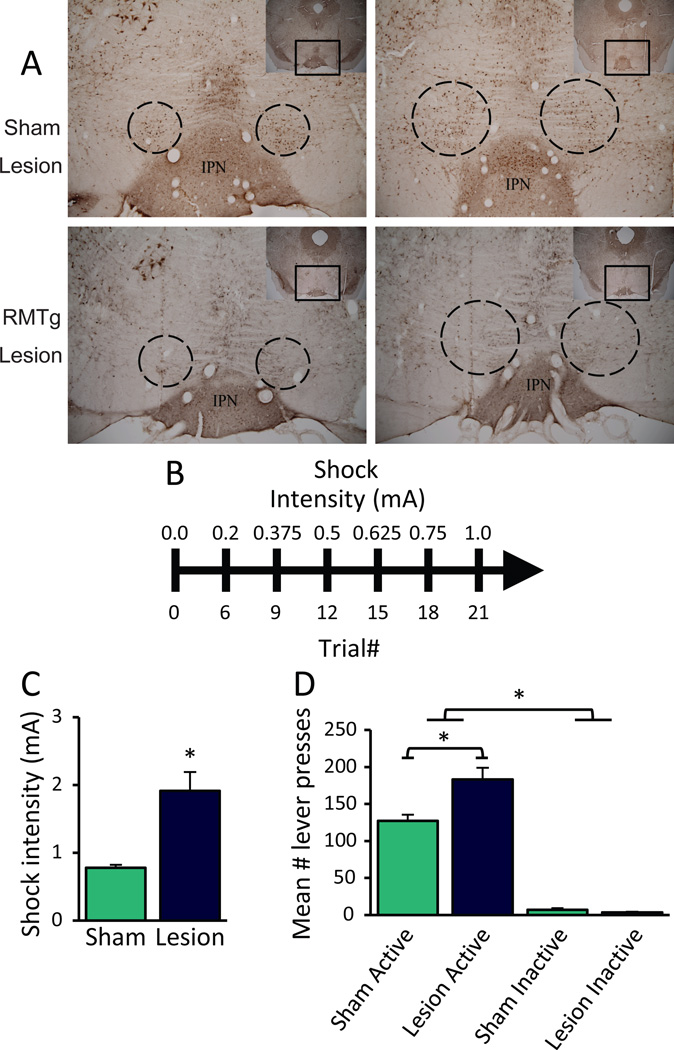Figure 1.
RMTg lesions lead to impairments in the suppressive effect of footshock on food seeking. (A) Representative images of RMTg and sham lesions. (B) A timeline of the progressive shock task. (C) Rats with excitotoxic lesions of the RMTg endure significantly greater shock intensities to receive food reward (n=9, 11) and (D) emit significantly more responses on the active lever than sham-lesioned controls. No difference in inactive lever presses was found between groups. *p<0.05

